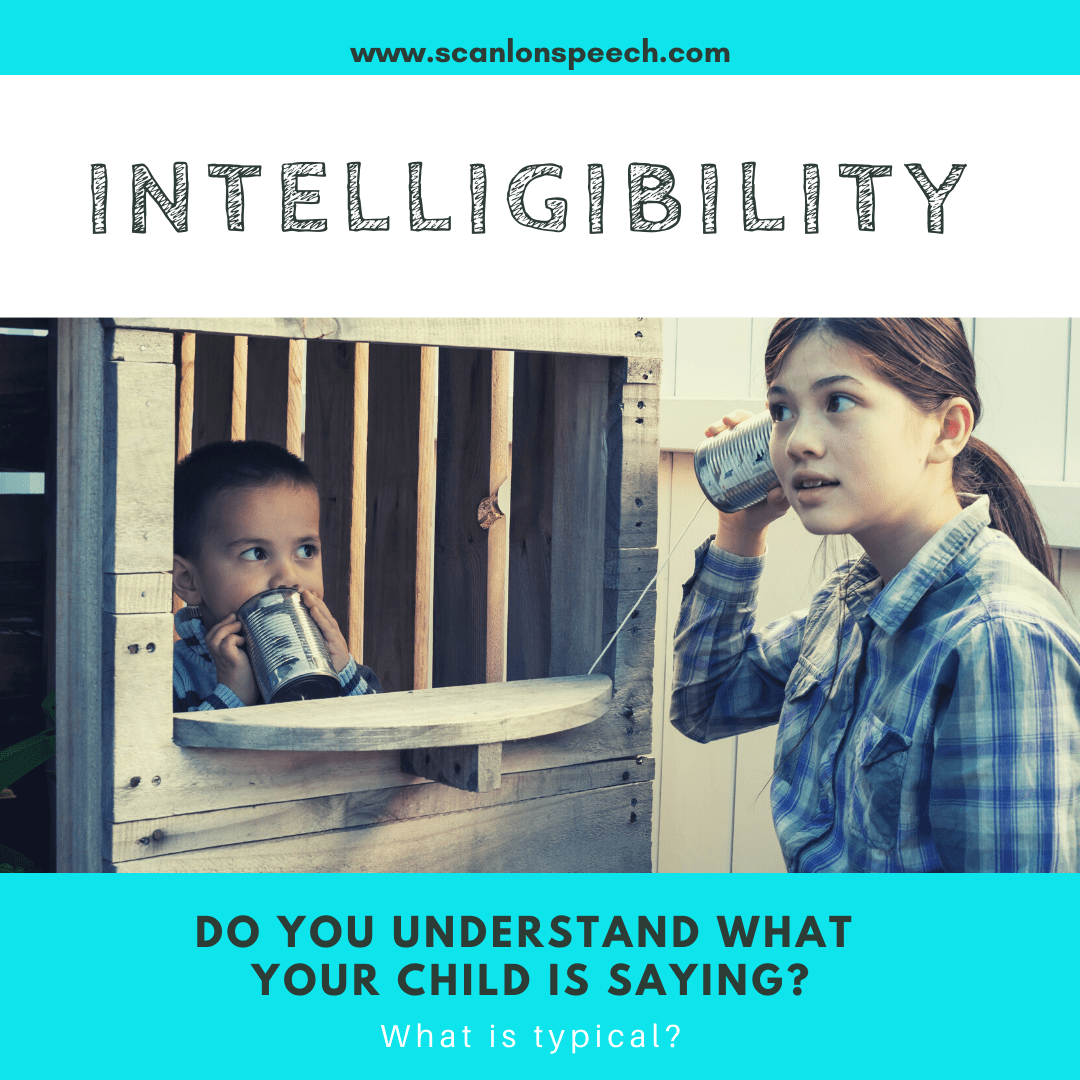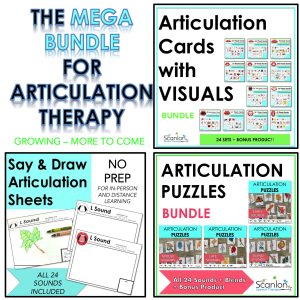Sign Up For Our E-Blast To Receive Information on our Books, Speech Therapy materials and our latest freebies!
Is Your Child Intelligible?

Is it challenging to understand what your child is saying?
Highly unintelligible speech can significantly impact functional communication, social participation and educational achievement.
Definition of Intelligibility
Intelligibility can be defined as “the extent to which an acoustic signal, generated by a speaker, can be correctly recovered by a listener” (Kent, Weismer, Kent, & Rosenbek, 1989).
In other words, intelligibility is how well the speaker’s speech is understood by the listener. Two parties are involved in the measurement of intelligibility.
Intelligibility is typically measured by parents via surveys and questionnaires. For instance, The Intelligibility in Context is a quick parent report that many speech language pathologists use to obtain information on the child’s perceived intelligibility. It asks parents to rate the degree, on a 5-point scale, to which their children’s speech is understood by 7 different communication partners (parents, immediate family, extended family, friends, acquaintances, teachers, and strangers).
However, parents are familiar listeners and usually over-estimate their children’s intelligibility because they are keen on listening to and understanding their children. This is necessary to acknowledge because a parent’s rating of their child’s intelligibility may not match that of a stranger. People need to be understood by all listeners – familiar and unfamiliar.
When Are Children 100% Intelligible?
Intelligibility norms tend to vary. The following information has been adapted from ASHA’s comprehensive summary – Neurological and developmental foundations of speech acquisition. It may help you in deciding whether or not to seek the assistance of an experienced and certified speech language pathologist:
By 2 years old = 26-50% of children are intelligible (Weiss, 1982)
By 2 years 6 months old = 51-70% of children are intelligible (Weiss, 1982)
By 3 years old = 71-80% of children are intelligible (Weiss, 1982)
Additional research reveals that by 3 years old = 73% (or, 50-80%) of children are intelligible when judged by three unfamiliar listeners. (Vihman, 1988)
It should also be noted that according to Vihman, “…children who used more complex sentences were more difficult to understand (1988).”
By 4 years old 93% (or, 73-100%) of children are intelligible in conversational speech with unfamiliar listeners (Gordon-Brannan, 1993 cited in Gordon-Brannan, 1994).
If the above information is too hard to remember, here’s a good GENERAL rule of thumb:
- Most 2 year olds are at least 50% intelligible
- Most 3 year olds are at least 75% intelligible
- *Most 4 year olds are approximately 100% intelligible
*This does not mean that they are saying every sound correctly. A speaker can still have articulation errors or other speech subsystems errors and still be intelligible.
There are 5 speech subsystems:
- respiration (e.g. volume – loudness vs. softness of speech)
- phonation (e.g. breathy or hoarse vocal quality and vocal fry)
- articulation (e.g. the production of clear and distinct sounds in speech)
- resonance (e.g. hypernasality/hyponasality, and cul-de-sac resonance)
- prosody (e.g. the patterns of stress and intonation in speech – monotone).
Source – https://www.asha.org/practice-portal/clinical-topics/dysarthria-in-adults/
According to an online CEU course I recently completed titled, Assessments and Differential Diagnosis of Speech Sound Disorders, Dr. Lynn Williams, Ph.D., talks about a critical age hypotheses for remediating unintelligible speech. According to research by Bishop and Adams (1990), she explains that
“Unintelligible speech must be resolved by age five or six in order to significantly reduce academic problems…” She goes on to say that unintelligible speech in the early years may affect literacy development.
Since most unintelligible children do not seek speech therapy treatment until approximately 4 years of age, speech therapy must be efficient and effective at remediating the speech disorder.
What Causes Difficulty with Intelligibility?
Some parents often wonder why their child is unintelligible.
The following can negatively impact intelligibility:
- Speech sound disorders or active phonological processes
- Imprecise articulation
- Hearing loss
- Fluctuating fluency and stuttering
- Fast or slow rate of speech
- Dysarthrias related to certain medical conditions (e.g. Down Syndrome and Cerebral Palsy)
According to Bishop (2010), 10% of children have developmental speech sound disorders.
Children with decreased intelligibility secondary to speech sound disorders typically benefit from traditional articulation therapy that aims to correct the incorrect speech sounds.
What Can You Do to Help Increase Your Child’s Intelligibility?
- Have your child’s speech formally evaluated by a speech language pathologist
- Have your child’s hearing tested by an audiologist
- Model clear speech and over-articulate your words
Hopefully, this post has been helpful!
The Mega Bundle for Articulation Therapy is a must-have for your speech therapy closet!
Check it out below:
- Enhance Your Speech Therapy Sessions with ‘Picky Kitty’ – A Must-Have Game for Every Speech Therapist
- Same and Different: Why Speech Therapists and Educators Should Target this Basic Concept
- New Beginnings for Scanlon Speech Therapy
- Articulation Speech Therapy: Favorite Activities, Games, and Books to Target the TH Sounds
- Articulation Speech Therapy: Favorite Activities, Games and Books to Target the L Sound

